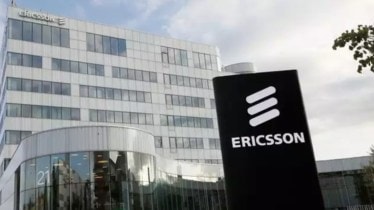5G has been hailed as a disruptive technology, comparable to artificial intelligence (AI), machine learning (ML) and the Internet of Things (IoT) in terms of the kinds of change it will bring about. How much of that is true and how much is just hype? Interest in 5G networks and the devices and applications that run on them is high among both consumers and business leaders, says Nitin Bansal, MD, India & head – Networks, Southeast Asia, Oceania and India at Ericsson. In this interview with Sudhir Chowdhary, he dwells on India’s 5G proliferation since its launch in October 2022 and its transformative potential across industries. Excerpts:
How do you see India’s 5G journey in the consumer segment so far?
Within just 19 months, Indian telcos have rolled out 420,000 sites spanning 738 districts, marking a remarkable global achievement in 5G infrastructure deployment. Around 170 million subscribers are estimated to have embraced 5G services and projections indicate this could surge to 860 million by 2029, demonstrating a substantial growth trajectory.
Forecasts suggest that 5G subscriptions will dominate the mobile landscape in India, constituting about 68% of total subscriptions within the next five years. By 2029, the expected average data traffic is set to reach 75 GB per smartphone per month. The Enhanced Mobile Broadband (eMBB) has already alleviated network congestion significantly, providing consumers with a seamless internet experience. These figures reflect a strong consumer adoption of 5G for enhanced connectivity and we expect a strong uptake by enterprises as well in the coming months.
Given India’s price-sensitive market with 250 mn 2G users, aren’t 5G smartphone prices too high?
We expect consumers to transition to 4G/5G smartphones with the growing availability of affordable options and better coverage.
There are still not enough 5G use-cases. Any recommendations to address this?
Given that 5G technology is still in its early stages, it’s essential to prioritise extending 5G connectivity nation-wide. Additionally, the ecosystem players have already begun innovating to create new application-based use-cases. With pan India 5G coverage, we expect to see more 5G use cases coming to life across different segments.
Around a million-plus YouTube content creators in India prioritise upload speeds, suggesting the potential for a tailored 5G content creator package. The mobile gaming sector, with 400 million users in India, is inclined towards low latency and fast server connections.
What global 5G use-cases in the consumer segment do you think can be adopted for the Indian market?
5G is a platform for innovation that will enable new use cases and possibilities for enterprises and consumers alike. The initial use cases, enhanced mobile broadband (eMBB) and fixed wireless access (FWA) will offer elevated data speeds for consumers on the go and address the low fixed broadband penetration in the country. From a consumer standpoint, the anticipated 5G use cases in India include 360-degree live streaming, cloud gaming, location-based AR shopping, and VR shopping.
What is the growth potential for fixed wireless access services in India?
Fixed wireless access aims to bridge the digital gap, especially in rural and suburban areas lacking fixed broadband infrastructure. It eliminates the need for physical infrastructure like fiber optic cables, offering reliable internet connectivity through wireless technology. This accessibility boost is crucial for socio-economic development. Globally, FWA adoption is projected to soar from 130 million connections in 2023 to 330 million by 2029, with 85% utilising 5G. Indian service providers are actively pursuing deployment of FWA to extend connectivity and drive growth.
GROWING 5G FOOTPRINT
420,000 5G base stations across 738 districts
Telcos have attracted 170 million subscribers till date
User base to reach 860 million by 2029
5G subscribers to make up 68% of total mobile users within 5 years
